The best wood for axe handles is hickory, known for its exceptional strength, shock resistance, and durability. Alternatives include ash and maple, which also offer reliable performance, but hickory remains the top choice for professional and amateur woodworkers.
No matter how carefully you use your axes, there’s always a risk of breaking the handles while dealing with thick log wood. And you can’t buy an extra handle every time as it won’t be cost-effective.
Therefore, making your own axe handles is the most convenient way with many benefits. You can make the handle at any length as per your needs. Moreover, you get the chance to choose the perfect wood depending on the hardness, resistance, and longevity of the wood.
To assist you in finding the best wood for axe handles, we have rounded up the 7 most suitable wood for axe handles that offer strength, durability, functionality, and the highest comfort. Ready to make your first DIY axe? Then let’s get straight into it.
You must consider some factors while choosing a particular type of wood for your tools. Some critical elements are durability, strength, grain pattern, shock absorption power, availability, better resilience, and texture.
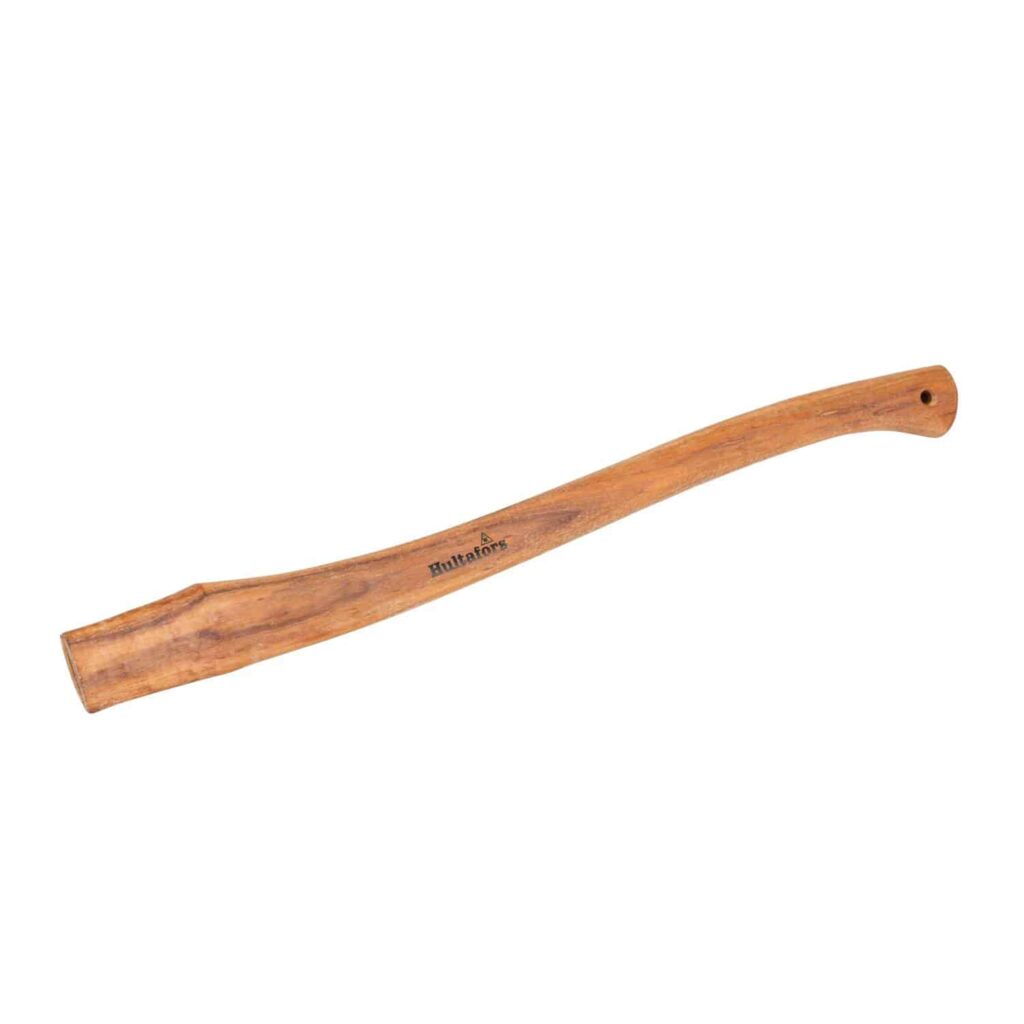
Table of Contents
Quick Summary
| Wood Species | Modulus of Elasticity | Features |
| Hickory | 14,900 MPa | Most Popular |
| Oak | 12,300 MPa | Most Affordable |
| Ash | 12,000 MPa | Absorbs Shock, Less Durable |
| Birch | 13,900 MPa | Shock Absorbant, Less Available |
| Sugar Maple | 12,600 MPa | Strong, Low Shock |
| Cherry | 10,300 MPa | Affordable, Brittle |
| Mahogany | 8,700 MPa | Easy to Shape, Prone to Shattering |
Here are the 7 high-quality wood with almost all of these excellent traits:
1. Hickory
Most American woodworkers will suggest the hickory wood for your axe handle if you ask an expert. Because the wood is native to North America, you can easily spot it all over the United States. And so, this hardwood is very affordable compared to any other wood.
Since hickory is a straight-grained wood, it’s highly durable, shock-absorbing, and lightweight. Moreover, the straight staves of the wood make it easier to carve handles from it in different manners.
We use the unit Modulus of Elasticity or MOE to measure the wood’s stiffness and resistance. It is a good indicator of the strength of any wood and can be measured in Mega Pascals or MPa at a 12% moisture level. The higher the MOE value, the stronger the wood is.
Hickory has an MPa value of 14,900, which indicates that the wood is incredibly strong and capable of withstanding high pressure without breaking. If you want your axe handle to be long-lasting, comfortable, crack-resistant, and strong, hickory is the ideal wood for you.
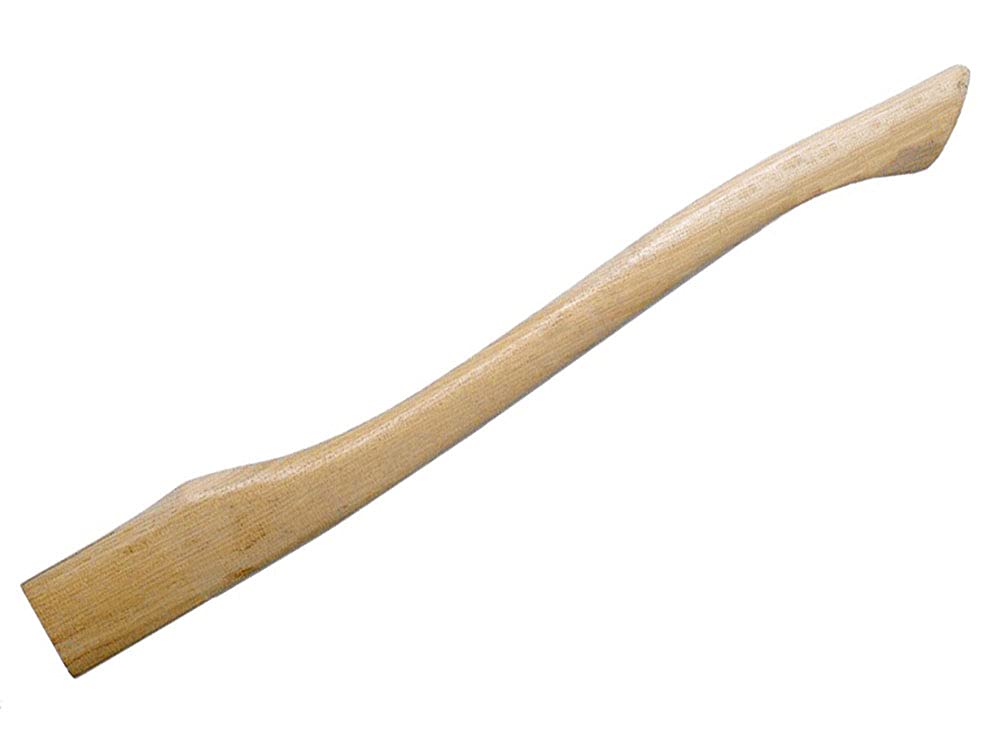
2. Oak
Oak is another popular choice for making axe handles. Many species of oak are found all over the nation. Thus, the wood is affordable for anyone. White oak will be the strongest and most durable pick for your axe among all the species.
What makes the oak handles better is the high density of the wood. The high density gives the wood stability and strength. Moreover, it helps to absorb more shock. As oak is naturally resistant to insects and fungus, you can store it anywhere without concern.
With a MOE rating of 12,300 MPa, the white oak allows you to strike even the hardest wood logs comfortably. One drawback of the wood is that it contains acidic elements that react with the metal blade of the axe and cause rust if the blade isn’t protected with an anti-rust coating.
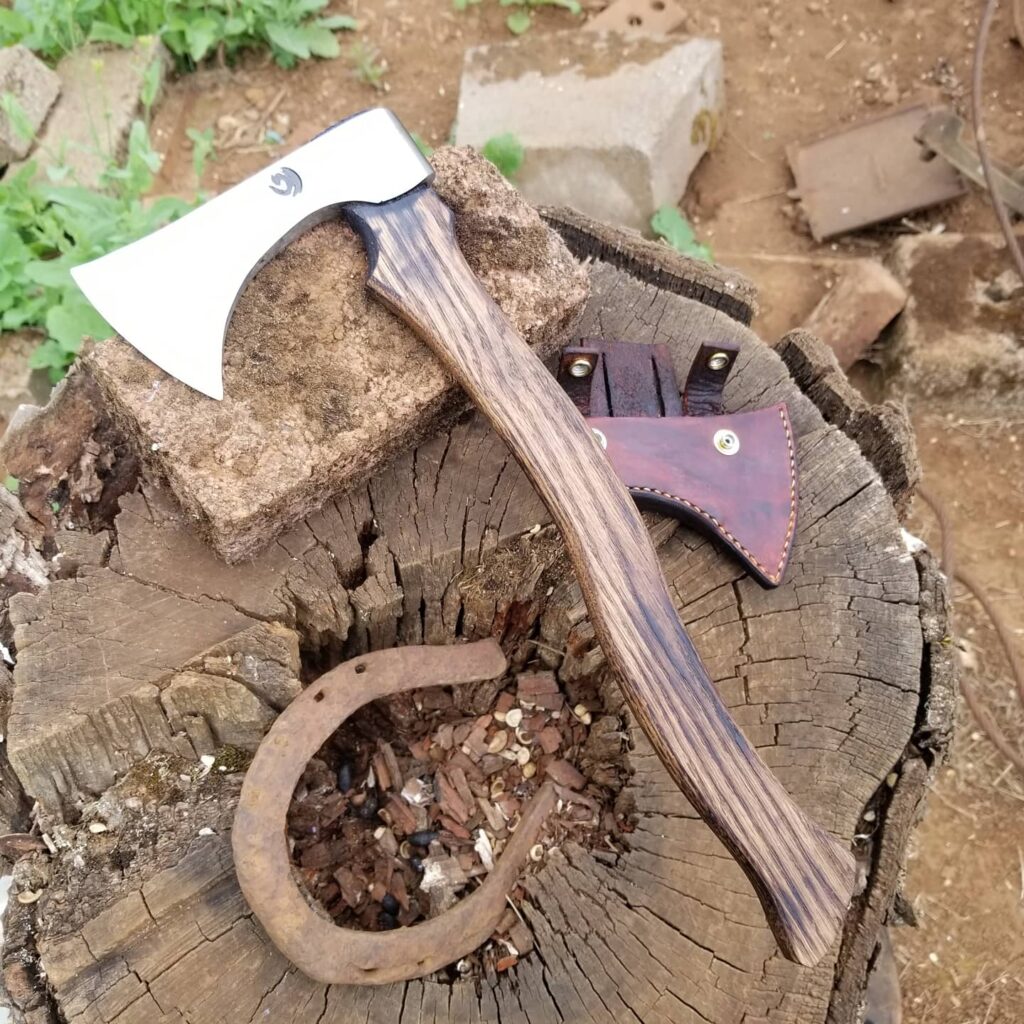
3. Ash
Many people regard the ash as the perfect wood for an axe handle. And the 12,000 MPa rating proves that they are not wrong at all. Ashwood has amazing flexibility and strength, making for a strong wood and eliminating muscle fatigue.
The straight grain orientation and long fibers effectively absorb shock and minimize chipping and splitting. Moreover, the straight grains allow you to fashion the wood into a handle effortlessly.
We didn’t put ash over the other two because the wood is less durable and less suitable outdoors.
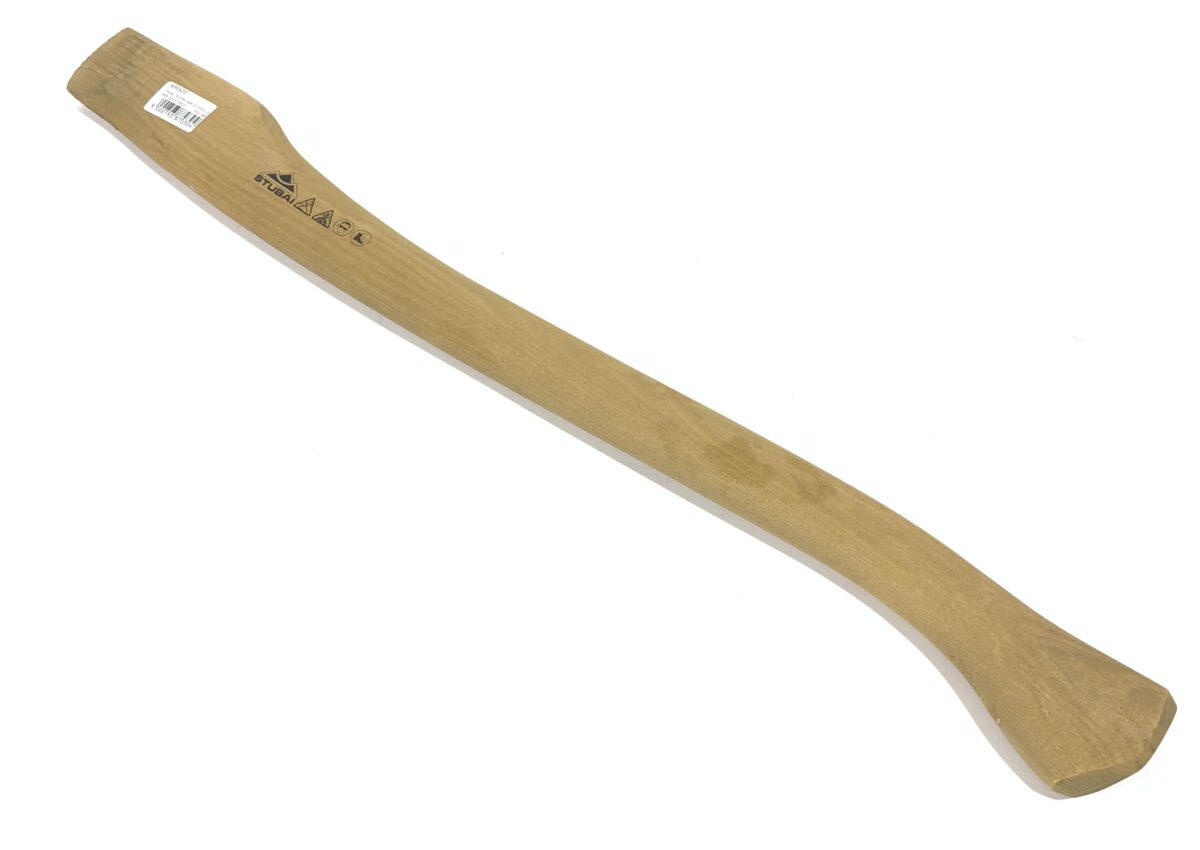
4. Birch
Birch is mainly known for its shock-absorbent features. Especially, the yellow birch wood has an MPa rating of 13,900, which tells it all about its resilient nature.
The wood is durable and strong, but not as much as our previous picks. It’s still a good choice over sugar maple woods as birch doesn’t tend to shatter. Also, the wood is perfect for outdoor use and storage.
However, birch isn’t widely available in many areas of North America. And so, birch wood can be a bit expensive, depending on where you live.
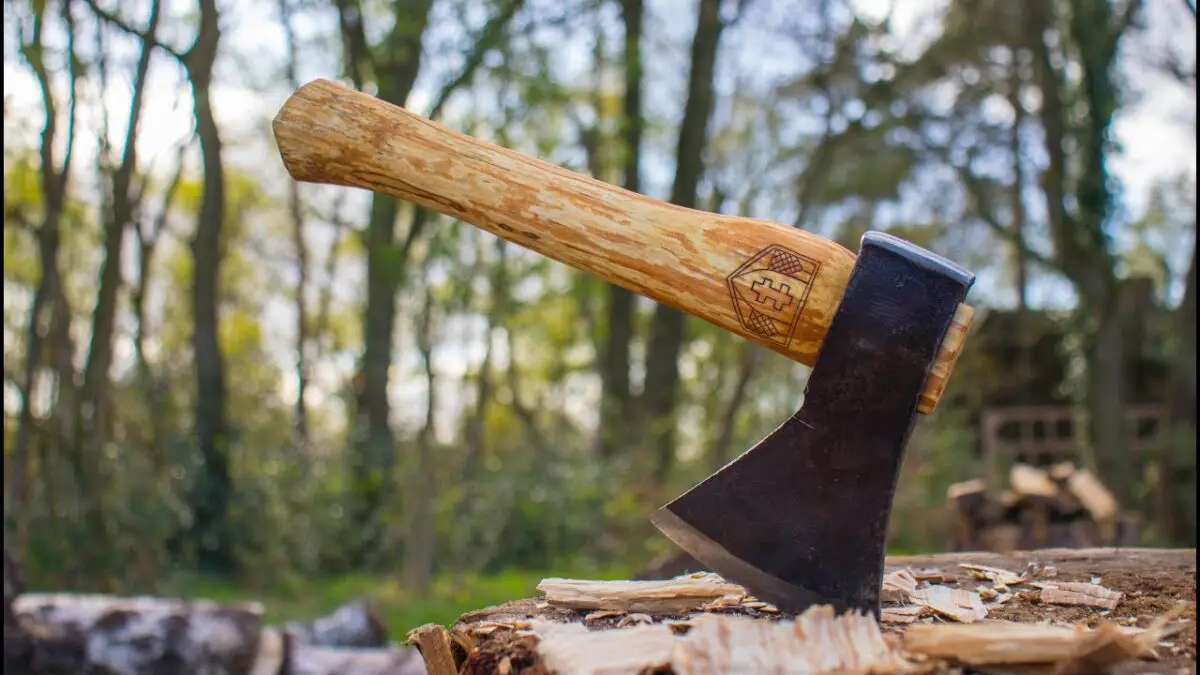
5. Sugar Maple
Maple is a widely used wood for making furniture, baseball bats, floors, and roofs. The key reason behind this wide usage is the strength of the wood.
If you want a strong and durable axe handle, you can go for this easily affordable wood. The wood is also very good-looking with a smooth finish, and so you will be very comfortable while using it.
However, maple sugar woods have a MOE rating of 12,600, meaning it does not absorb shock well as hickory or ash. Due to the hardness of the wood, it’s more likely to shatter under extreme levels of shock.
6. Cherry
The availability of cherry wood makes it preferable to many folks. Compared to other ones of this lineup, cherry wood is cheaper.
Besides affordability, cherry is also famous for its looks. Cherry-made handles are very smooth and look very rich and refined. Although cherry is a softwood, it’s fairly strong and very much suitable for camping and light wood cutting tasks.
Cherry wood has a low MPa rating at 10,300 which means the wood doesn’t perform well under high pressure. Moreover, the wood is brittle and less durable than the hardwoods.
7. Mahogany
The mahogany wood is very attractive; it will give your axe handle an upscale look with smooth edges. If you oil the wood regularly, it will remain in like-new condition for years. Moreover, wood is available in every corner of the nation.
The wood features parallel grain orientation, making it easy to shape. On the downside, mahogany is a brittle wood and prone to shattering if put under excessive pressure or shock.
Conclusion
So, there you have the best wood for axe handles. Every wood on our list is unique in features and most suitable for making high-quality handles.
If you want to use your axe for heavy-duty tasks, we recommend hickory, white oak, or ash. The strength and durability of these three are unparalleled.
If you need a compact, easy-to-use axe handle just for camping or occasional use, sugar maple and birch will be more than enough.
